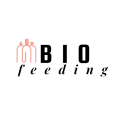Understanding the Connection Between Baby Development and Bottles
When discussing baby development, one hardly ever fails to mention the critical role played by the bottles used for feeding. Baby development bottles create a nurturing and supportive environment for your little one, becoming an integral part of responsible feeding. This article aims to enlighten you on just why safe baby bottles are crucial for your baby’s well-being.
Why Safe Baby Bottles Matter
Safe baby bottles are not a luxury, but a necessity. They ensure that babies consume their food in a healthy, efficient, and environmentally friendly manner. Let’s delve into why these bottles deserve recognition in the world of
- Quality Material: Safe baby bottles are typically made from high-grade material that is BPA-free. This ensures that no harmful substances leach into the baby’s food.
- Promotes Comfort: These bottles mimic the mother’s breast, providing solace and comfort to the baby. This leads to a more relaxed and satisfied baby.
- Prevents Air Ingestion: Safe bottles are designed in such a way that they restrict the intake of air during feeding, reducing the chances of gas and colic.
The Immense Benefits of Biomimetic Bottles
While we are on the topic of safe baby bottles, let’s shine a light on the magic of biomimetic bottles. These bottles replicate the natural feeding experience, creating a seamless transition from breast to bottle. They soothe babies and foster a sense of security and attachment, leading to a happier and healthier baby.
- Natural Latching: Biomimetic bottles have specially designed nipples that mimic a mother’s breast, promoting natural latching and allowing a more comfortable feeding experience.
- Optimal Milk Flow: These bottles ensure an optimal milk flow, preventing unwanted air ingestion and reducing the chances of baby colic.
- Easier Transition: They provide a familiar feel, making the shift from breast to bottle quite seamless and less distressing for both mom and baby.
Moving Towards Responsible Feeding
Ultimately, ensuring your baby’s development and well-being requires an approach of responsible feeding. This means understanding the importance of not just what you feed your baby, but also how you do so. Choosing safe baby bottles, specifically biomimetic bottles, forms an essential part of this approach.
Whether you are a new parent or an experienced one, always remember that every small step towards responsible feeding contributes to your baby’s well-being. So make the switch today, and witness the magic unfold in your baby’s development journey.
Transition from Bottle Feeding to Solid Foods
Introducing solid foods to your baby’s diet is another crucial stage of their development. Safe baby bottles play a central role in this transition too. The introduction of solid foods gradually displaces milk as the primary nutrient source. However, bottles ensures that this transition is smooth and doesn’t distress the baby. Let’s look at a few tips to handle this transition:
- Gradual Transition: Do not cease bottle-feeding suddenly. The switch from bottle to solid food should be gradual. Start with semi-solid foods and increase the quantity over time.
- Simultaneous Weaning: Introduce a cup alongside the bottle and begin by filling it with breastmilk or formula. This eases the baby into the concept of a new drinking apparatus.
- Routine: Maintain a consistent feeding routine, gradually replacing one bottle feeding session with a cup and solids.
You can learn more about transitioning from bottle feeding to solid foods at Better health channel.
Helping Baby Hold Their Bottle: A Milestone in Baby Development
A significant milestone in a baby’s development is when they start holding their own bottle. This milestone is typically reached between 6 and 10 months of age. Being able to hold their bottle not only gives your baby a sense of independence but also helps develop their motor skills and eye-hand coordination.
The key to helping your baby achieve this milestone is to encourage them gently and be patient. You can learn more about when babies start holding their bottle at Pampers.
How Baby Development Impacts Feeding Techniques
With each turning phase in your baby’s growth, the feeding techniques change, so do safety considerations. We ought to remember that feeding is a developmental process that progresses with the baby’s physical and neuromotor growth, as outlined by Cleveland Clinic. Hence, it is important to understand your baby’s behavior and development to ensure a healthy feeding experience.
Safety Precautions During Feedings
Safety during feeding, just like during any other activity, is vital. Here are some safety precautions that need to be followed during feedings:
- Bottle Cleaning: Always clean and sterilize bottles before usage to keep bacteria at bay.
- Bottle Position: Keep the bottle tilted at an angle during feeding so that your baby takes in milk and not air. This will help reduce gas and colic.
- Care with Solids: As you introduce solid foods into the baby’s diet, be careful about potential choking hazards. Steer clear of hard, small and round foods, sticky or dense foods and foods like hot dogs or grapes unless they’ve been diced and cooked.
It is important to remember that each baby is unique, and their pace of development can vary. Hence, while bottle-feeding, or while transitioning to solids, adaptable bottles and constant vigilance play a critical role. They assure safety, comfort, and a nurturing environment for your baby’s healthy growth and development.

